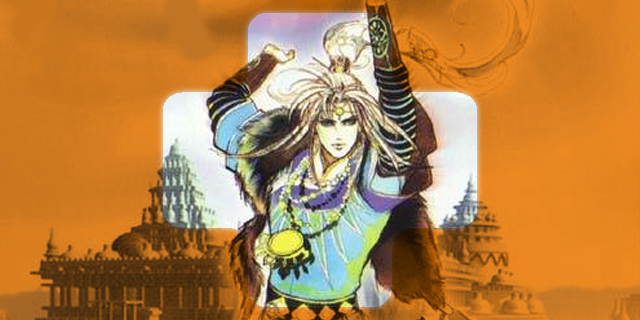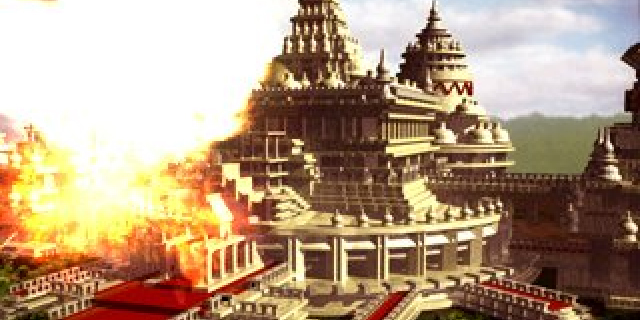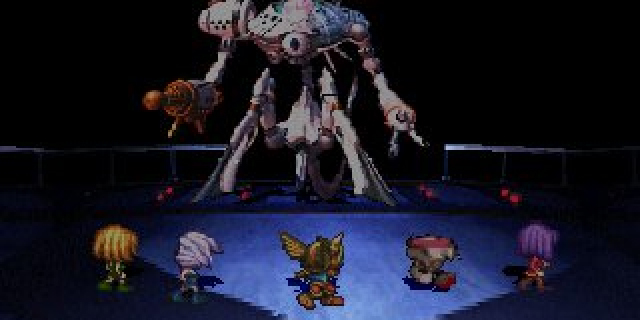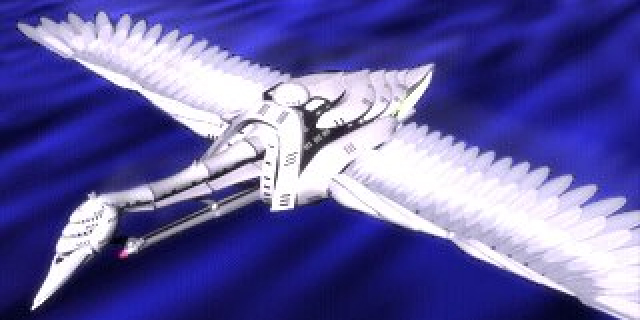
When you think about classic Square franchises, what comes to mind? Final Fantasy would be your immediate reaction, but there’s also Mana, Kingdom Hearts, the Chrono games and even Front Mission. One I feel is rarely discussed is SaGa, a series I consider one of Square’s best (or at least its boldest). Let’s talk about what makes the series so groundbreaking despite how little attention it is paid by those fondly remembering the days of Square’s past, focusing on my favorite of the bunch, SaGa Frontier.
Let’s start with a brief history lesson. The saga of, well, SaGa, started way back in 1989 with Makai Tōshi Sa·Ga (released in North America as The Final Fantasy Legend) for the original Game Boy. The series has little to no resemblance to Final Fantasy other than the focus on turn-based battles, but the Final Fantasy brand was more of a hot commodity back in those days, so the name change makes some sense. There have been nine games in the series since, but only a handful ever saw a proper U.S. release.
The series was well known for its non-linear gameplay, open-world exploration and branching storylines focused on multiple characters, rarely seen in a JRPG back then (or even today). Because of that never really garnered the attention from RPG fans that Square thought it would at the time, making the series more of a cult favorite, even in Japan. It’s not all perfect, mind you (we don’t talk about Unlimited SaGa), but you won’t find very many JRPGs like them.

While I had played the Final Fantasy Legend games on the Game Boy (Legend II being my personal favorite), SaGa Frontier was a bit of a groundbreaking experience for me. It really helped establish the non-linear nature the series is known for to me and get me interested in JRPGs that don’t force you on one strict path, something that is still rarely seen. It threw you into one of seven different stories and, outside of some linearity in the introduction, did little to lead you by the hand. After playing a game like Final Fantasy VII, SaGa Frontier completely changed how I viewed RPGs at the time.
The problem people had with this game was precisely due to its non-linear nature; many players felt the game never gave a clear sense of direction and that killed any momentum it may have had in the beginning. You could stumble into trouble and not even know it, or be going on one path for hours when you’re supposed to be on another. This is exactly why I love it.
These days, we are all familiar with non-linearity in games, so this topic isn’t entirely foreign to most of us. Back then, for many people into Square’s games, myself included, they might have been thrown off by the nature of the gameplay. Sure, there were elements that seemed familiar, but the entire product felt off to those used to crumb trail you got from most JRPGs. Mind you, this was before I truly appreciated WRPGs (such as the original Fallout games), but SaGa Frontier helped me go back and appreciate those titles in hindsight.

Even when I first delved into one of the stories, it took me a while to truly appreciate what it was trying to do. There were so many areas to explore and I struggled to find exactly where I needed to go. In time I understood it was less about going from point to point and more about learning about the world, the characters that inhabited it and the many dangers that seemed to always surround me. Once I grasped that, I was hooked, exploring every area and every possibility each of the seven main characters had to offer.
Even going back to it today, it holds up surprisingly well. The art style is still nice, although clearly dated, and the standard turn-based battle system, while a tad clunky, still feels even more customizable than other games of this era. And what about its non-linear structure? I’m willing to say that it not only holds up, I think it actually works better in this day and age than it did back when it first came out. I feel the series was, in a way, ahead of its time, and SaGa Frontier in particular proves that.
It’s hard to look back at titles like it knowing full well very few JRPGs would take its approach. It’s understandable considering the series has never had a die-hard fan base, especially outside of Japan, but it makes you wonder just how different things might have been if it took off the same way Final Fantasy did. Sure, if you’re looking for the structure games like SaGa Frontier offer, you can find it in modern (and classic) WRPGs. Despite that, there was something oddly compelling about SaGa Frontier’s approach that hasn’t been attempted since, even by other titles in the series.

I won’t sit here and call SaGa Frontier or any of the other titles in this vastly underrated series revolutionary, but there is something to be said about this bold approach to both storytelling and mechanics. It really spoke to me back then and gave me a new perspective on a genre I thought I knew as well as anyone. It’s such a simple approach to this style of RPGs that has gone unutilized despite the potential for its growth being tremendous.
We may never see another game in the SaGa series again, adding it to the ever-growing graveyard of classic RPG franchises, yet its legacy will always inspire me to look beyond the standards we’ve come to expect from games, not just JRPGs. For that, I will be eternally grateful.



















